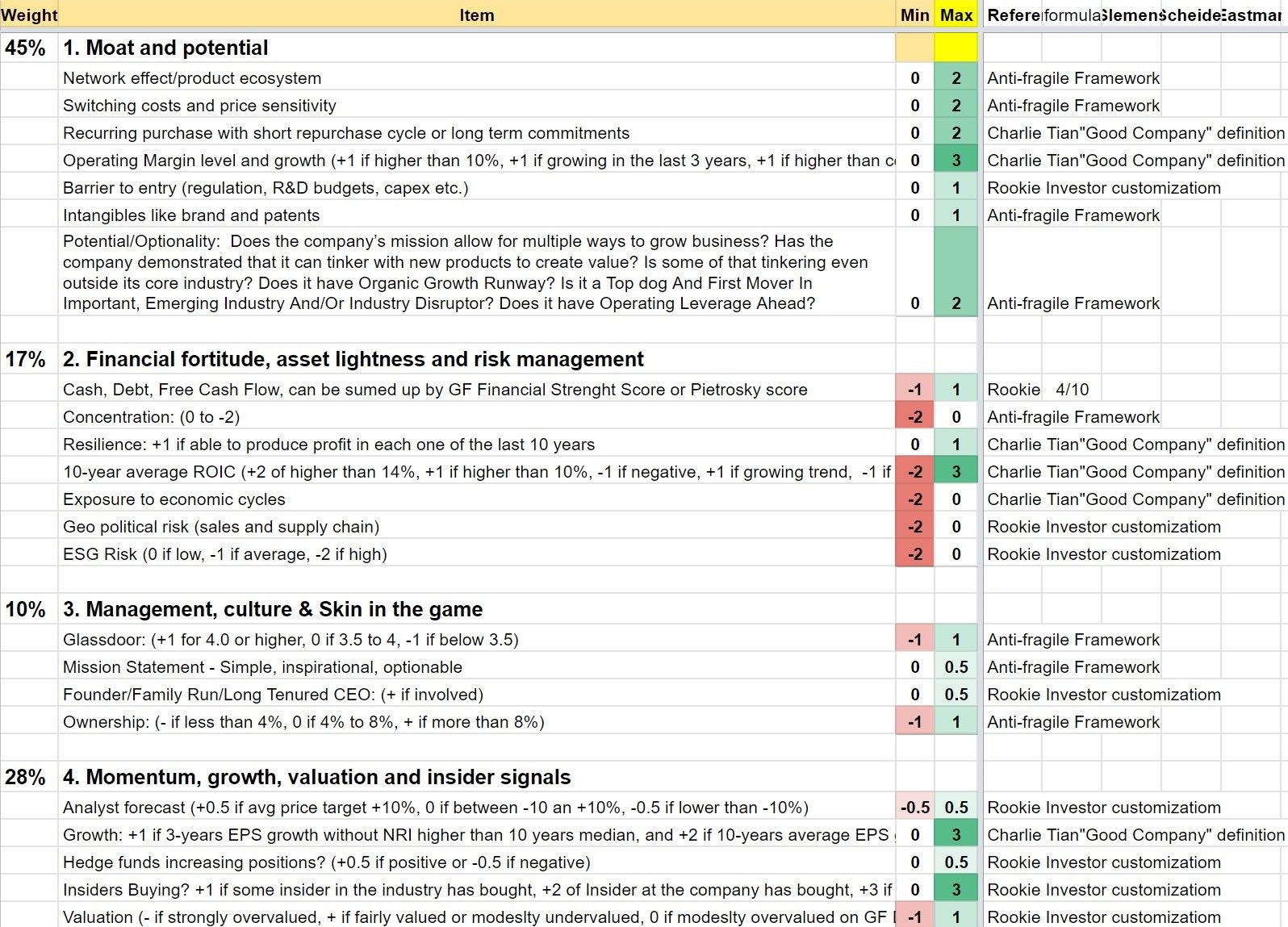Growth or Value investing? What about both?

With so much euphoria for "growth" stocks (aka stocks that grow business metrics like crazy but can't turn any profit yet) in 2020, I started studying more about value investing as a way to lower my portfolio risk. You can read more about that on my previous post about a Value Stock I invested in.
I found particularly interesting the book Invest Like a Guru, written by the founder of GuruFocus.com, Charlie Tian. Charlie considers himself a value investor and a follower of the legends Peter Lynch, Warren Buffet, and Donald Yacktman. His book is like a concentration of the learnings he got from them, plus some interesting real-world stats on the best value investing strategies.
What are value and growth investors exactly?
Value investors seek to “buy and hold” and grow with the business or “buy low” when a business is undervalued and “sell high” if it becomes overvalued.
Growth investors look for “emerging” growth companies that have the potential to achieve high earnings growth but have not necessarily established a history of earnings growth.
There is a third kind: momentum investors try to “buy high and sell higher.” Paying $2 for something and hoping to sell it for $3 to someone else is not investing. It is speculating.
The fundamental difference between both
Paradoxically, growth itself is not what differentiates both strategies 🤯.
As history's most successful value investor, Buffett was misunderstood quite often on growth. Many people believed that he didn't care about it, but growth is one of the most important components of his definition of wonderful companies.
The fundamental difference is one looks for "profitable" growth (the value investor), while the other is willing to bet on future profits.
Value investors look at years of the company´s history, 10 in Charlie´s case, to determine if it is capable to constantly produce and grow profit. Charlie himself recognizes that, which such a strategy, you are trading risk for reward. You have to be ok to miss the party on the biggest winners of all time such as Amazon, Netflix, or Tesla, in exchange for being less exposed to risk, in particular during market bubbles.
Growth investors, on the contrary, are willing to lose most of their invested money on more than half of their bets while they get to ride a couple of multi-baggers rockstars stocks that will make up for their loss and more. Almost like a Venture Capital.
The convergence of Growth and Value investing
Besides the fact that growth itself is valued by both types of investors, both look for fundamentals too, that is to say, both look for "quality companies".
Charlie defines quality by the following variables:
- Consistent profitability at decent and stable profit margins, through good times and bad. Charlie also uses 10 years of US market data to make his point, showing that the companies that were profitable over the 10 years had a 6% chance of losing investors' money while the companies that were profitable 9 out of the 10 years had a 21% incidence of losing money.
- Being an asset-light business with a high return on invested capital. The author looks at 10 years of data of 3,577 companies that have been transacted for at least 10 years on data the US market. He underlines the following trend: when a company needs to spend less money out of its operating cash flow, the average return on invested capital is higher. He also shows how strong is the correlation between this return and the stock price performance.
- Continuous growth of revenues and earnings. And the author uses yet again GuruFocus.com data to show why. There is a positive correlation between the rate of Earning Per Share growth and the stock price performance of the companies. Those that were profitable over the past ten years but had declining EPS did the worst. The stock of the companies that grew 20% / year outperformed those that grew 5% / year by more than 6% on average.
Points 2 and 3 are clearly what the growth investor is also looking for, then again the only major difference would come from the first point about a proven track record of profitability. Wait but what about the price you are willing to pay for these companies?
Price doesn´t matter 🤯🤯 and under-valued companies usually destroy value.
I found it fascinating how many insights Charlie has about the evolution of Buffet´s thinking. Referring to Buffet´s famous quote "It's Far Better to Buy a Wonderful Company at a Fair Price Than a Fair Company at a Wonderful Price”, Charlie details that
Buffett changed his requirement on valuation from “a very attractive price” in 1977 to “an attractive price” in 1992, then to “a fair price” in recent years.
The author goes further to underline that an initial overpay of 20 percent is translated to 1.8 percent a year in underperformance if the holding time is ten years, and 6.2 percent a year if the holding time is three years. In other terms, price should be relegated to second thoughts, as long as you are looking for longer time windows, invest only in good companies, and you are not paying for extreme valuations. In this view, it would be wrong to assume that value investors prioritize price over quality. This is what would do a "deep-value" investor. Charlie explains the main reasons why deep value investing is not a recommended strategy:
- Erosion of Value Over Time: Buffett wrote in his 1989 shareholder letter that “time is the friend of the wonderful business, the enemy of the mediocre.”
- The pain of Timing the market: Charlie Munger said, “If you buy something because it's undervalued, then you have to think about selling it when it approaches your calculation of its intrinsic value. That's hard.”
Deep-value investing is not less risky than growth investing during bad times for the market, quite the contrary. Value investing is not as much about the price you pay for a company as the quality and predictability of the company you invest in.
Over the long term, the contribution from the growth of the value can be so high that the price would no longer be that critical.
Valuation methods suck
Charlie is also clear on the limits of most common valuation methods such as Discounted Cash Flow models (aka DCF), which are as good as the variables you input in it. Most of these methods fall apart when the predictability of the business is low because it usually uses past data to predict the future. The less historic data a company has, or the less stable are these data, the more difficult it gets to value it. Here is another fundamental difference between the growth vs value investor, the latter use and trust traditional valuation methodologies to make an investment decision because they invest in more predictable companies. None of these methods would make an investor purchase Tesla today for example, because the "margin of safety" between the value they calculate and the current value is just too high.
I am adding value investing tools to my arsenal
I like the fact that you don´t have to be pretending to "buy low" to be a value investor, but you do have to prioritize the quality and resilience of a business that has proven itself in past crises to lower your risk exposure. It sounds like a logical strategy in the current market euphoria conditions, even though it makes you miss on the biggest riser, it also makes you sleep better.
My objective is to double my money every 4 years, but I also want to sleep at night and not be glued to my computer all day. I think this is what value investing is about when depicted by the author, as it allows:
- Not to worry about timing
- To be more forgiving with the purchase price
- Not to risk permanent loss of capital
I will not make a U-turn on my current portfolio, as I do want to keep investing in future bets I strongly believe in, such as Fastly, The Trade Desk, and Fiverr to name a few, but I will start putting closer attention to stocks that pop up on the GuruFocus´s "good company screener".
I am also adding some of GuruFocus screener settings to my own scorecard, including:
- The 10-year average Return on Invested Capital (GF screener look at ROIC higher than 14% only) which I will use on my "financial strength" analysis.
- The 10-year median operating margin and its last 3 years growth rate, which I will add to the "Economic Moat" analysis, as above-average profit margin numbers usually mean pricing-power.
- The 10-year and 3-year earning per share growth rate, which I will add to the "momentum/growth" analysis.
In my updated scorecard, moat, potential, growth and return on capital now account for 2/3 of the max score. The rest is composed of financial strength, management, valuation and insiders signals. I just used it to rate 5 stocks: CVNA, SEDG, COUP, JKHY, and SQ. Carvana, Coupa Software and Jack Henry all had insider buying movements in the past month. But the winner is JKHY with 17 points, which makes me even more confident about my last reco (and made me add to my position yesterday).

A robust system, cash on the sideline and mental prep: the keys to time the market
It is key to have a robust system in the research process to be the most prepared, and take advantage of buying opportunities, either in the form of a market correction or other possible scenarios such as short-sellers attacks on a good company. A mini correction happened this week, and we saw SQ, COUP, SEDG and TDG down more than 10% from their 20 days moving average (aka SMA20). If you had already scored these stocks, and you knew it scored above your threshold for investing, you would have been able to act quicker and you would already have enjoyed a rebound of more than 7% on any of these stocks. You also need a cash position to take advantage of these opportunities.
This is why I will keep investing time building and scoring a watchlist of stocks I want to buy, to make sure not to lose future opportunities to buy it. For those who show patience, these opportunities always come.
PS: you can receive alerts when stocks from the watchlist pulls back more than 10% from its 20 days average by joining our Slack Workspace.